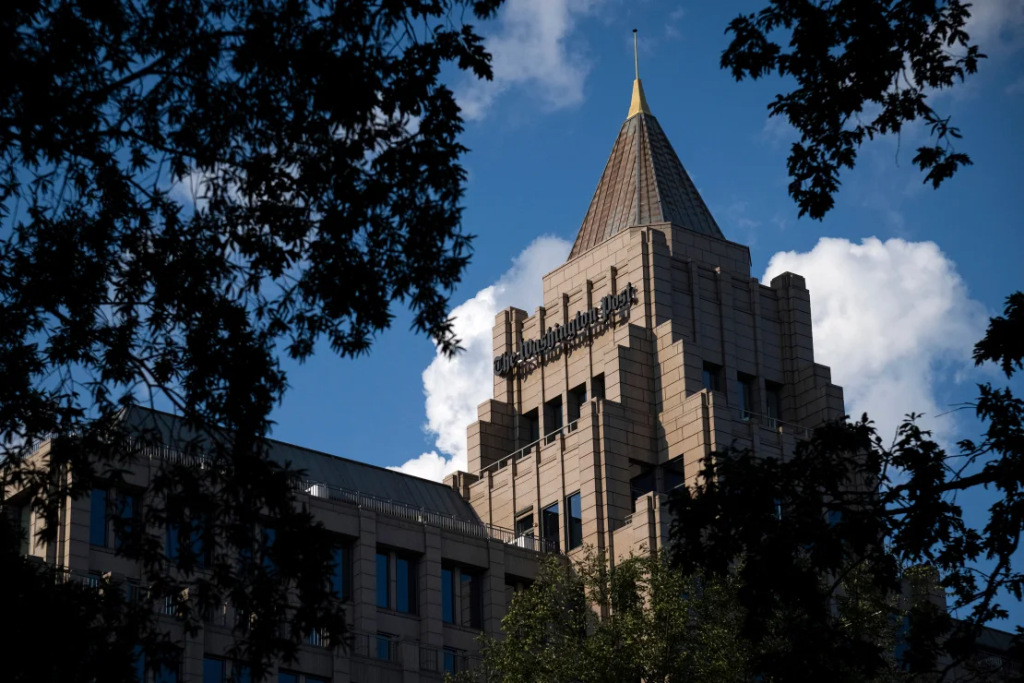A new era is on the horizon for The Washington Post.
The broadsheet — which surged in readership during Donald Trump’s chaotic presidency, but has since struggled to maintain that audience — is set to welcome a new chief executive and publisher in the coming weeks.
Owner Jeff Bezos is “very close” to making his selection, a person familiar with the matter told me Thursday, adding that the pick will likely be announced in November. Puck’s Dylan Byers reported Wednesday that a pick could even be announced within days.
Whomever Bezos selects for the task will face enormous challenges. Interim chief executive Patty Stonesifer revealed to employees earlier this month that, under previous chief executive Fred Ryan, the company “overshot on expenses.” Stonesifer described The Post as a “really good business,” but added that she has been working to “right size” it.
Some of the problems stem from The Post’s declining audience. Stonesifer disclosed that the publication’s readership has plummeted since Trump’s White House exit, with its digital audience sinking by a staggering 28% since 2021. Digital subscriptions, Stonesifer added, had dropped 15%.
That brutal reality has led to financial distress for the storied newspaper (it is on track to lose $100 million this year), forcing executives earlier this month to take evasive action, announcing that the company will reduce its workforce by 10% through voluntary buyouts.
Executive Editor Sally Buzbee, who held a town hall Thursday to answer questions from apprehensive Post staffers, told the troops that she expects to maintain 940 journalists across the company heading into 2024, people who attended the meeting told me. Still, she acknowledged that saying goodbye to such a large number of newsroom staffers will be difficult.
“It’s not going to be easy to lose valued colleagues,” Buzbee told the gathered staff, according to those who were there.
During the meeting, Buzbee said that The Post needs to be wholly committed to building workflows centered on its digital presence. In other words, the primary emphasis should no longer be on the print edition that has typically been the focal point throughout its history. The Post, she added, needs to be more engaging for new audiences and improve its offerings to maintain them.
To achieve those goals, Buzbee invoked what she said Bezos told senior leadership while in the office this week: “We need to be tactically impatient and strategically patient about our long term future.”
For his part, Bezos directly communicated with The Post’s journalists by way of a one-paragraph note Thursday. The billionaire Amazon founder said he had an “invigorating 48 hours” at The Post, “learning about our great and important work,” according to a copy of the memo I obtained. Bezos affirmed he is “committed to the future of The Post as ever.” But he reiterated his desire for The Post to be financially solvent.

“Long term it’s important that The Post return to profitability – a key signal that we’re serving readers in a way that’s important to them,” Bezos said. “If we work hard to understand our readers (and what they value) and keep producing the caliber of reporting I had the pleasure of reviewing with the teams this week, I know we’ll again find financial success.”
Getting to that juncture will not be a walk in the park. Media companies, broadly speaking, are navigating a formidable and rapidly-changing landscape posing existential threats to their businesses.
The Post, specifically, has a fair amount of work cut out for it.
One item certain to be on the agenda is expanding the aperture of the D.C.-focused outlet. It’s no secret that the acquisition strategy executed in recent years by its arch rival, The New York Times, have frustrated some staffers inside The Post, who wished that Ryan had made similar plays.
Will The Post move to make moves of its own under new leadership?
“Once we are given the green light to acquire, there is a lot of running room,” a veteran staffer at The Post told me.
But The Post is not alone in its struggles. Legacy newspapers across the country, terrestrial broadcasters, CNN, and digital upstarts alike are grappling with the transition to new revenue models to sustain their newsrooms into the future. The rapid decline in their traditional business not only raises concerns for the future of journalism, it has sweeping implications for society at large.
As the Post proclaims next to its masthead, “Democracy dies in darkness.”
— CutC by cnn.com


